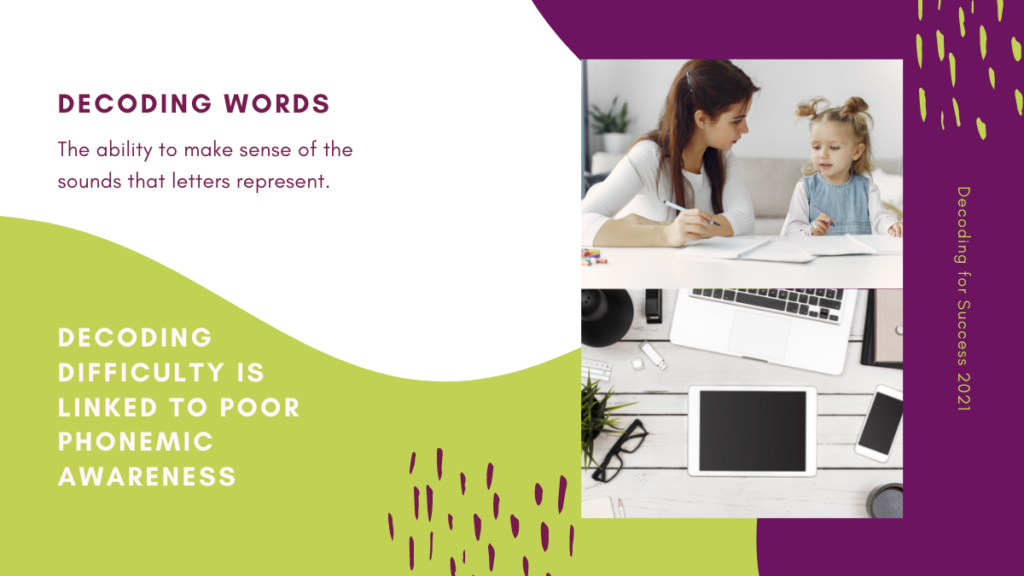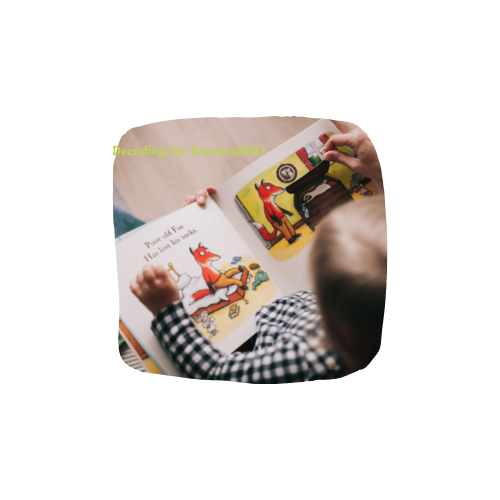
The decoding of words is translating print to speech in a quick way by matching the letters to the sounds they represent. Roughly 30% of students struggle with decoding. You may not know what this means, decoding of words is sounding out words but it’s not as easy as it sounds. Decoding words meaning voicing each sound in a word and blending them together to read the word.
Teaching decoding should be explicit and systematic as well as multisensory. When children are taught explicitly how to decode words they learn to read thousands of words quickly and smoothly. The first step for decoding is learning to hear sounds in words. This beginning step is called phonemic awareness. If you join my mailing list you can receive my free resource to build phonemic awareness.
The Decoding of Words

When I first started teaching I was gifted the book Recipe for Reading. The woman who gave it to me said if you read this book you can teach anyone to read with a pack of index cards. I flipped through the book and put it on a shelf and never read it. Little did I know that I had the key to teaching decoding on my shelf. The scope and sequence and the how to teach are all in that book. Today I know better so I try to do better and I can help you.

There are many problems that students face when learning to decode words. One problem is they guess at words. They see hop and read hit. Or they see the word the and they say a. They read so slowly that they cannot make meaning from the words they read. How dyslexia see words is also a problem that causes poor decoding.
Good readers are able to know which sound each letter or letters make. They can then take those sounds apart and then blend them back together. They understand how groups of letters work together and they can blend the words quickly to make meaning. These skills need to be automatic in order for students to read.
My Decoding Plan
My lesson plan is easy: review letter sounds, build words for students to read, practice reading words or sentences and finally write words and sentences. These simple steps will help your students learn to decode. Spending 20 to 30 minutes a day on these skills will help your students hear the sounds, blend the sounds and spell the sounds. It helps them make a connection between decoding and encoding.
I believe phonics is the key to help children learn to be good readers. They need to learn to decode words in kindergarten and first grade. Students who do not read well at the end of first grade continue to struggle for the rest of their lives. It is important to start early and teach decoding well.
The Scope for Decoding
When you start teaching decoding begin with a few letters that appear most frequently in words. The first letters to start with are f,l,m,n,r,s and a. These letters will help students begin to create words right away. I always start with lowercase letters and teach letter formation in a multisensory way: skywriting, sand, playdough or wiki stix. After teaching the first few letters I practice blending two sounds together. When they master two you can increase to three.
Each day or two I add more sounds and this allows for more words. When children can decode CVC words easily I move on to nonsense words. Nonsense words are so helpful for teachers. It helps you see who really gets it and who is just memorizing words. Not that memorizing is bad but we want the students to know the sounds so they can read longer words. Many students dislike nonsense words because they are hard but they are so valuable. After CVC words, I teach bonus letters and the nasal sounds of an and am. When children know these basic skills they can read a lot of words and they start to feel successful.
The order that I like to teach the letters is as follows: f, l, m, n, r, s, a, d, g, p, t, i, o b, sh, h, j, c, k, ck, v, w, x, y, z, ch, th, qu, wh, u, e.
Problems with Decoding

Decoding problems are easy to identify but hard to correct if you do not have a systematic approach that you follow very carefully. You cannot jump into long vowels when a student doesn’t know their letters. You cannot expect them to read words when they cannot identify letters consistently. The decoding of words is really important but make sure you build strong foundations with letter names and sounds before you jump to reading. Teaching decoding is one of those skills that give you huge outcomes without being so difficult to teach. If your student can decode words you can then he or she can encode or spell the words.

There are tons of activities to help students practice these skills. I love activities that show pictures and allow the students to write the word. I feel like the combination of recall, sounding out and then writing help students to map the words for long term decoding and encoding.
Visit Kayse’s Blog: 7 Helpful Tips on How to Blog Like a Boss
